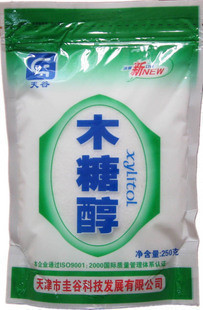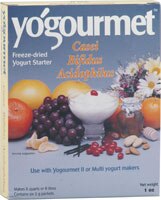Probiotics, the beneficial micro-organisms, are not very beneficial if they are dead on arrival. It can be a treacherous path from production of probiotic supplements and live probiotic yogurt to the creation of actual communities of beneficial micro-organisms improving gut ecolology. How do you protect and support the good guys in your gut?
About 99 percent of commercial yogurt is made with just two bacteria – S. thermophilus and L. bulgaricus. These two organisms are excellent for quickly fermenting the lactose in milk and thickening the milk. Once in the human body, however, they are not exactly probiotic superstars. Most are killed by the gastric acid in the stomach and the few that reach the gut are not able to multiply and colonize the gut. They quickly pass through with little lasting positive effect. These wimpy bacteria are also short lived in commercial yogurt. The live organisms in yogurt rapidly degrade and completely die off within three weeks of production. Another reason that fresh homemade yogurt is so much healthier.
There are several strains of Lactobacillus and Bifidobacterium micro-organisms that can live in yogurt and can survive in the gut to colonize with healthy bacteria. Why are these healthier probiotic bacteria not routinely used in yogurt? Unfortunately, they do not add much to the taste or texture of commercial yogurt, so commercial yogurt companies rarely incur the additional cost of adding them. They can only be found in a few specialty probiotic yogurts and probiotic yogurt starters. While probiotic strains flourish in the human gut, they are not as hardy as the commercial yogurt strains during the production process. If you attempt to make probiotic yogurt using an old batch for a starter, you will find that the commercial yogurt starters grow faster and will quickly crowd out the healthier bacteria in successive batches. To make probiotic yogurts, you must add fresh probiotic organisms to each batch.
Bifidobacterium, the bacteria that dominates in the gut of a breastfed baby, should always be added to probiotic yogurt. There are several popular strains with B. bifidum being most common. Other popular strains found in healthy human guts include B. infantis, B. adolescentis, B. longum and B. breve. While Bifido can live in both the small and large intestine, my Chinese microbiologist friends tell me they are most helpful in the large intestine where they promote good GI health.
Lactobacillus bacteria probably play a more important role in the small intestine where they seem to improve the immune function and help people who suffer inflammatory autoimmune diseases. L. acidophilus is the most common Lactobacillus probiotic organism which can colonize the gut. L. casei is transient micro-organism but some studies have shown it can assist the propagation of acidophilus. L. reuteri and L. rhamonous have been shown to be especially effective in preventing and lessening symptoms of eczema, asthma, allergies and other autoimmune diseases. I have postulated that improving the health of the small intestine may mediate any possible disturbance of the production of incretins produced in the lining of the small intestine, a condition which can impair first phase insulin response in Type 2 diabetics. Both Bifidobacterium and Lactobacillus promote healthy mucosal lining which will prevent leaky gut syndrome that can lead to chronic inflammation and result in increased insulin resistance.
I love my yogurt, but there are other reasons I prefer getting my probiotics from fresh yogurt rather than probiotic supplements. The live organisms in probiotic supplements are usually freeze dried. If kept in a cool, dry environment, they might maintain most of their efficacy for six months to a year, but they are extremely sensitive. Humidity is the main problem. Probioitcs sold in a bottle began rapidly degrading as soon as the bottle is opened. If you want to use probiotic supplements, be sure to only buy probiotics that are sealed in individually in blisterpack packaging and manufactured very recently. They are best stored in a freezer until they are used. Please be careful of condensation when cold probiotics are first removed from the freezer. Wait until the package is at room temperature before you open them.
Some probiotic supplements are enteric coated to help the micro-organisms survive the gastric acid and make it to the gut. Most manufacturers of probiotic supplements admit that they deteriorate rapidly after production and more than 80 percent of the remaining organisms will be killed in the body before they reach the gut. The survival rate of probiotic organisms in yogurt passing through the stomach is believed to be higher.
Like probiotic supplements, probiotic yogurt starters are fragile. They must be fresh, packaged in individual sealed packets, kept dry and not exposed to heat. It is still difficult to find good probiotic yogurt starters. Frankly, it is rare for commercial yogurt starters to contain more than 1-3 of the probiotic strains that I mention above. I have worked with Chinese microbiologists trying to develop yogurt starters that contain L. reuteri and L. rhamonous because I have not been able to find them commercially. Unfortunately, L. reuteri and L. rhamonous appear to not be stable in yogurt medium and not commercially viable. They still must be consumed as expensive supplements like Culturelle and BioGaia. The Yogourmet probiotic starter mentioned in my previous post on yogurt does contain L. acidophilus, L. casei and a strain of Bifidobacterium.
Homemade yogurt stored in the fridge is still a live food which is quite perishable. The half-life of the probiotic organisms is probably less than a week, so I recommend eating your homemade yogurt within a couple of days. This is no problem for my family. How wonderful that good gut health can be so tasty!
And remember – consuming lots of healthy probiotics will do you little good if you are eating bad food. Avoid simple carbohydrates, especially fructose, which feeds the bad gut bacteria and be sure to eat lots of soluble fiber to feed the good bacteria.
+chronic+disease.jpg)

















